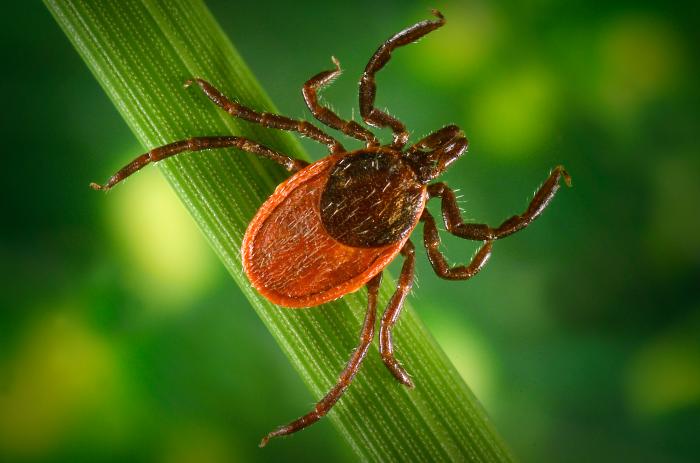A tick bite is disturbing enough, but when that bite can give you a host of incurable, debilitating diseases, it’s worth knowing what could be coming your way.

Ticks are the leading vector of human and animal infectious diseases in Europe. They are best known for carrying Borrelia (the agents of Lyme disease), but depending on the location, ticks carry a panoply of infectious bacteria and parasites. For example there’s also the rarer Borrelia miyamotoi, which causes a relapsing fever accompanied by aches, nausea or a rash, and then there’s the Babesia parasites that cause a malaria-like illness called babesiosis. Moreover, since ticks can spread these pathogens just as fast and as far as their animal and human hosts carry them, it is critical to public health to know which tick-borne diseases are emerging where.
To enable more thorough epidemiological surveillance, researchers from across Europe collaborated on a high-throughput screen to monitor and quantify the presence of 25 bacterial and 12 parasitic species. Previous studies have only managed to monitor a handful of these pathogens because the miniscule amount of DNA that can be squeezed out of a tick simply isn’t enough for all of the different tests. The new method begins by specifically pre-amplifying the pathogenic DNA, increasing the genetic material to sufficient levels for the full panel of tests.
“With the pre-amplification step you only amplify the pathogens inside of the tick, so the level of pathogen is higher and you can detect the pathogens much more easily,” explained Dr. Moutailler, the corresponding author and Project Manager at the French Agency ANSES. The prevalence of each pathogen is subsequently quantified by following the rate of amplification using real time PCR with specialized fluorescent probes. Combined with a screening capacity of greater than 9000 simultaneous measurements, this method allows pathogen detection on an “unprecedented scale.”
After applying the screen to more than 7000 ticks from France, Denmark, and the Netherlands, the prevalence of expected pathogens was generally consistent with previous studies, but there were a few notable exceptions. Two types of babesiosis-causing parasites, as well as two rarer Borrelia species, appeared for the first time in Denmark. It was generally believed that B. miyamotoi had not reached Europe, but based on these findings, it can now be considered as “a new emerging bacteria.” “It’s quite everywhere now,” said Dr. Moutailler.
The most abundant pathogen across all three countries was Rickettsia helvetica, which appeared at a frequency several times higher than previous reports. Rickettsia’s role in human disease has yet to be confirmed and further studies are needed to more accurately estimate Rickettsia’s presence. Its suspected link with a fatal heart infection makes it yet another likely candidate as an emerging public health concern.
In addition to being a major advance in the rapid and comprehensive surveillance of emerging tick-borne pathogens, the method may also provide insight into the interactions between different parasites and bacteria within a single tick. It is unclear how co-infection with multiple pathogens influences the ability of ticks to spread more than one infection at a time. “In some ticks we have bacteria, parasites, and viruses – so a very high level of pathogens in one tick. We don’t know if there is some synergy or antagonism between the pathogens and, finally, what the tick can transmit,” said Dr. Moutailler. ~K.E.D.C.
Citation: Michelet L, Delannoy S, Devillers E, Umhang G, Aspan A, Juremalm M, Chirico J, van der Wal FJ, Sprong H, Boye Pihl TP, Klitgaard K, Bødker R, Fach P and Moutailler S (2014) High-throughput screening of tick-borne pathogens in Europe. Front. Cell. Infect. Microbiol. 4:103. doi: 10.3389/fcimb.2014.00103
